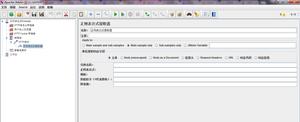Python - re - 正则表达式 - 怎么用

<python cookbook> - 1.18 - 一次完成多个替换
这个blog介绍正则,写得不错,而且,一如既往的‘长’。
1. re.escape(string)
THIS,说明函数的用法、实际用途。
# 1. 基本用法
>>> import re>>> strTest = 'abcdefg'
>>> re.escape(strTest)
'abcdefg'
>>> strTest = 'abcdefg()\4'
>>> re.escape(strTest)
'abcdefg\\(\\)\\\x04'
# 2. figure out this: '|'.join(map(re.escape, adict))>>> dictTest = {'a':'1', 'b':'2', 'c':'*', 'd':'$'}
>>> re.escape(dictTest)
Traceback (most recent call last):
File "<stdin>", line 1, in <module>
File "/usr/lib/python2.7/re.py", line 214, in escape
return pattern[:0].join(s)
TypeError: unhashable type
>>> map(re.escape, dictTest)
['a', 'c', 'b', 'd']
>>> '|'.join(map(re.escape, dictTest))
'a|c|b|d'
# 注意到上面的格式是用'|'连接的,简单地说,'|'可以连接多个规则pattern
2. re.compile()
THIS - 简单地说明怎么用。
>>> rx = re.compile('|'.join(map(re.escape, dictTest)))>>> rx
<_sre.SRE_Pattern object at 0x852fb80>
3. group([group1, ...])
THIS - 简单地说明怎么用。
# 链接中的事例,简单说,一个(),就是一个group>>> m = re.match(r"(\w+) (\w+)", "Isaac Newton, physicist")
>>> m.group(0) # The entire match
'Isaac Newton'
>>> m.group(1) # The first parenthesized subgroup.
'Isaac'
>>> m.group(2) # The second parenthesized subgroup.
'Newton'
>>> m.group(1, 2) # Multiple arguments give us a tuple.
('Isaac', 'Newton')
4. re.sub
THIS - 简单地说明怎么用。
5. 理解所有 : 一次完成多个替换
import redef multiple_replace(text, adict):
rx = re.compile('|'.join(map(re.escape, adict)))
def one_xlat(match):
return adict[match.group(0)]
return rx.sub(one_xlat, text)
6. Python - 闭包
1. Look at THIS
2.
# This definitely is closure.def addx(x):
def addy(y): return x+y
return addy
print 'addx(x):', addx(1)(1)
# Is this closure??
def addxy(x, y):
def addy(y): return x+y
return 0+addy(y)
print 'addxy(x, y): %d' % (addxy(1, 1))
END
以上是 Python - re - 正则表达式 - 怎么用 的全部内容, 来源链接: utcz.com/z/386919.html



